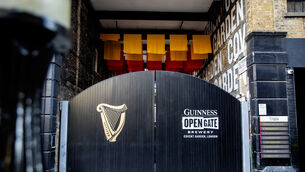Call for minister to reject leaked EU plan for flat rate payments model
Already in wide circulation in Ireland, the document cites January 1, 2019, as the date when the new flat rate ‘per hectare’ payment system would replace the current ‘historical’ model.
This likely change in the Common Agriculture Policy, expected to be agreed in 2013, was already predicted by EU Agriculture Commissioner Dacian Ciolos on a visit to Dublin last October.
He said the new flat rate mechanism, if supported by the EU’s agriculture ministers, would ensure that a greater share of the EU spend on farming would reach new entrant member states, notably those in Eastern Europe. The move may yet be resisted by the EU’s stronger farming states.
Mr Bryan said the flat rate system outlined in the EU report would inflict massive economic damage on Irish farming, agricultural production, the food sector, jobs and economic recovery.
He described the EU Commission’s proposal as a “flat-earth policy” that would wreak havoc on individual farmers and the productive sector and called on Mr Coveney to defend Ireland’s national envelope and the Single Farm Payment.
“Any proposal to distribute the Single Farm Payment on a uniform per hectare basis within a region is totally unacceptable, as it takes no account of differences in the productive capacity of farmers or land in member states or regions.
“At farm level, it would have an extremely disruptive effect, and would result in many farmers reducing their levels of activity and output. This would have a hugely negative knock-on effect in the agri-food sector, on economic activity in the rural economy in particular, and on our export earnings.”
A Department of Agriculture spokesperson said that it could take a month or two before the EU’s ministers would be in a position to comment on the report.
Speaking in the Dáil last year, Mr Ciolos said that the EU’s taxpayers are fully supportive of payments to farmers. However, he added that in the enlarged 27-member European Union, taxpayers would not support a two-tier payment mechanism that differentiates between long established member states and new entrants.
Klaus-Dieter Borchardt, a senior official in the commission’s agriculture directorate, told an IFA conference in Tullamore that Ireland’s overall package of European funding is unlikely to be heavily impacted by the CAP reforms. Average per hectare payments to Ireland stand at around €270 per hectare, the exact EU average. Thus, Mr Borchardt said, the flat rate system would leave Ireland’s package intact.
The leaked report stated: “Milk specialists would be negatively affected by a general move towards a regional flat rate. Grazing livestock specialists would be better off, assuming that the partially coupled payments are maintained.
“The remaining types of farming would either experience no change or an increase of the DPs received and income. Moreover, regionalisation would leave less favoured areas better off.”















